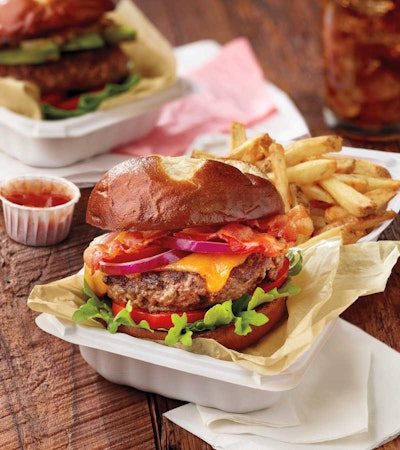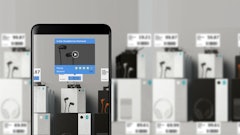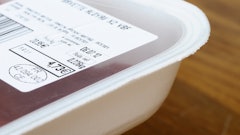
Not too long ago, you could get free delivery from the local pizza parlor, Chinese restaurant or sushi spot. Maybe they’d add a pre-set fee. These restaurants had a direct, personal relationship with their consumers, the drivers knew who the best tippers were, and consumers knew they would get what they wanted and who to call if there was ever an issue.
Third-party delivery apps brought new options for consumers, shifted ordering from phone calls to phone apps and introduced new fees for consumers and restaurants alike. Suddenly the formerly “free” delivery had an extra $10 or so on there (plus tip). Restaurants appreciated the business, especially during the pandemic, but felt at the mercy of the delivery services and the fees they charged.
So, what exactly are those fees? How are they determined? Is there a way restaurants can retake ownership of this relationship while still capitalizing on the convenience of mobile technology?
Today, the Top 3 delivery apps represent nearly 90% of the market and are starting to approach profitability or at least positive cash flow. So where is all this money coming from?
The pandemic inflection point
During the Coronavirus disease (COVID-19) lockdowns, third-party delivery was a lifesaver for consumers and restaurants. But poor working conditions for delivery drivers pushed the California legislature to reclassify gig workers as employees, and the delivery app companies countered by drafting and promoting the passage of Prop 22. This initiative (still in the courtrooms) brought workers minimum pay guarantees and health insurance. But these costs were often passed along to consumers at that time in the form of new fees described as “CA Driver Benefits” or “Health and Safety” fees.
As the pandemic dragged on, local officials wanted to help restaurants reduce the 30% fee the apps were charging and limit fees on what had effectively become an essential service. Guess how the apps responded to limits on their restaurant fees? By creating new “Regulatory Response” fees for consumers. Some even called it a “Denver fee” or an “Oakland fee” without further explanation.
These fees can seem confusing and arbitrary, and are also driving up food prices. To help pay the app fees, many restaurants add $1-2 to the cost of individual items.
Outlining the fees
What are the actual fees charged by the apps? How much do consumers pay, and how does that compare to what restaurants pay?
After local governments attempted to crack down on high fees, the big apps changed their pricing to offer a range of options, with a more significant fee percentage resulting in better visibility in the app or the ability to reach a wider delivery area.
Today, the biggest apps all charge between 5-30% of the food cost. Most restaurants will pay 15-20%, but if the restaurant takes over delivery with its own drivers, then the app fee goes down to 5-6%.
For consumers, things are a little more complicated. Here’s a breakdown of typical fees and where the money goes.
- Service fee and taxes. The service fee portion goes to the app company, usually about 10% of the total. Local sales taxes make up the rest, typically 7-9%. Bundling these together helps hide how much is going to the apps.
- Delivery or booking fee. This varies per restaurant, usually between $1.99-5.99, or even up to $8 during a price surge. This fee goes to the app service, not the restaurant, to cover operational costs like driver pay.
- Food charge. This is the listed price for the actual food, but remember, it’s usually $1-2 higher than ordering directly from the restaurant.
- Tips. According to a UCSC study, most drivers get $3-5 for a delivery, and tips can comprise 40% of a driver’s overall pay. There’s debate if it makes more sense to tip the driver with cash or add it in the app before or after the order is placed. Adding it in the app before ordering may prevent from drivers rejecting the order if the app is only offering $3 for the delivery.
- Small order charges. If you place an order under $10-15, you may have to pay a small fee.
- Local “health fees.” This may be called a “Driver Benefits Fee,” and helps the delivery company pay for driver health coverage.
- Local “regulatory response” fees. These might as well be called “pandemic pricing fees.” This is the extra $1-2 the apps added after communities capped restaurant fees.
- Gas fees. When gas prices were high in early 2022, several apps added a new fee of around 35-45 cents to help offset some driver fuel expenses.
Rebuilding the restaurant relationship
Despite the near ubiquity of food delivery apps, restaurant owners (and their customers) don’t have to accept all these fees. Many restaurants and businesses are busy enough to bring delivery in-house and own the “last-mile” experience for their customers. When a restaurant does its own delivery, they only need to pay 6% to the apps or less if a customer uses an independent web service. By combining delivery management and order fulfillment software, businesses can do their own routing, run analytics or even send automated SMS updates when the order goes out the door.
When businesses use in-house delivery solutions, they can gain better control of the last mile, decrease fuel usage with better routing and save customers third-party fees. In-house fleet operating costs are about 40% less than the price of outsourcing to a delivery service.
Looking down the road, time will tell if third-party delivery apps can turn a profit over the long term. Meanwhile, restaurants have an opportunity to rebuild their relationship with customers by taking delivery in-house. This shift will create a better experience overall, reduce consumer pushback on fees and give restaurants a better handle on what their customers want. With better awareness and more control, restaurants can weather the changing environment, adapt to the post-pandemic consumer and build a foundation for future growth.




















